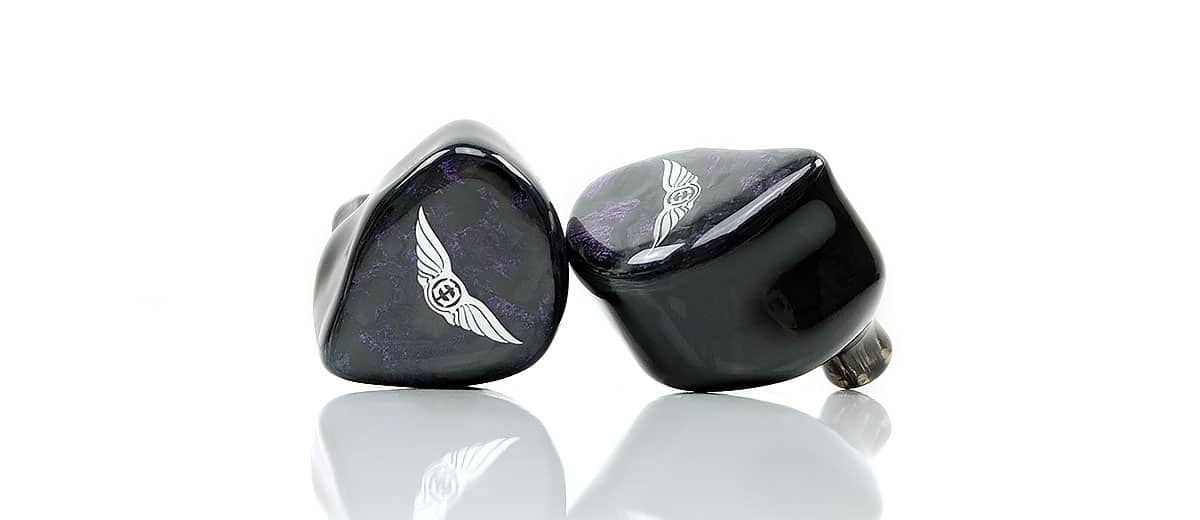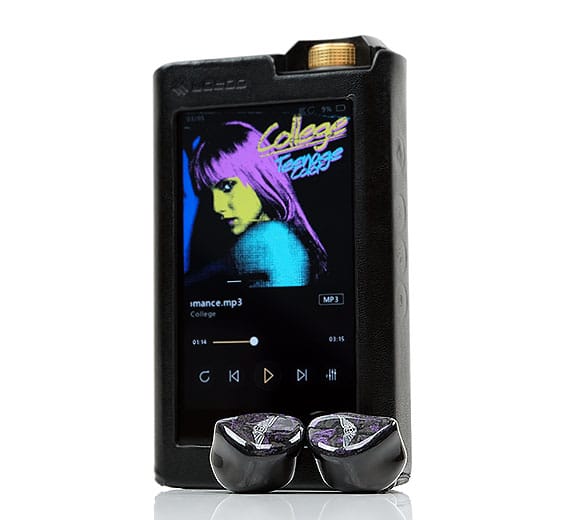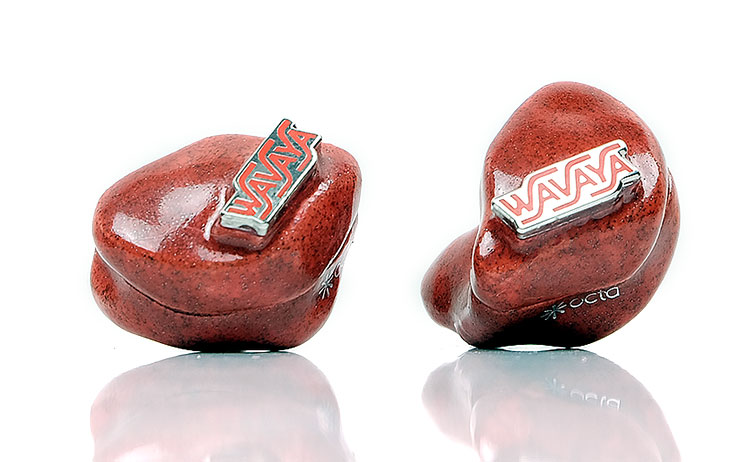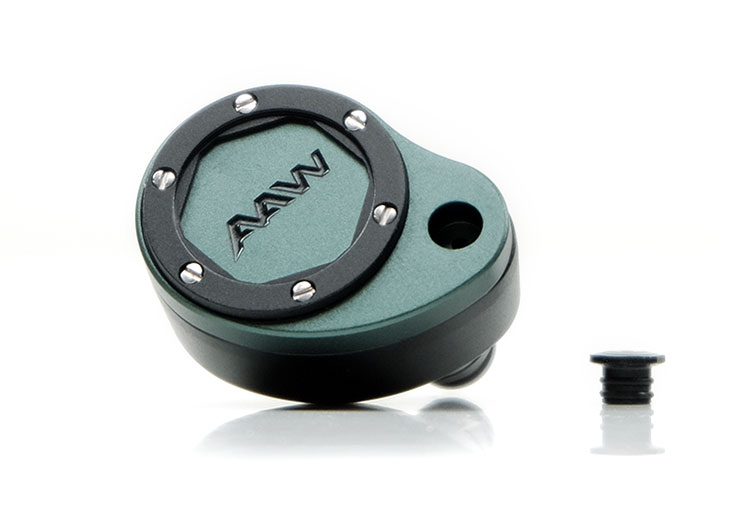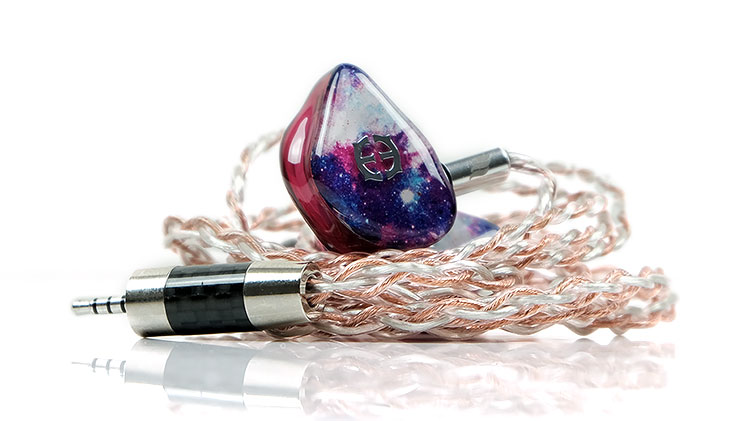Synergy
Efficiency
The headline Wraith spec is that low 4Ω impedance and a fairly sensitive 117dB SPL. And indeed yes, the Wraith is a little on the sensitive side for picking on hiss from higher noise floors.
The FiiO M11 I would avoid if you need your amp output to have a really back background when paired with the Wraith. The low-gain 3.5mm output is not too bad actually but the 4.4mm has a low level of hiss which is not suitable for me.
I recommend switching to the FiiO M15 instead which is very quiet on both balanced and unbalanced outputs in low-gain. Avoid using the additional power on the Over-ear headphone mode. You get limited current improvements as well as a layer of unwanted hiss with the Wraith in balanced mode.
The noise floor is also a little too high on the Cayin N6ii/E02 motherboard pairing, even in low-gain. It sounds beautiful when you do not need that black background but my suggestion is to stick with the E01 which is quieter.
Best Performers
The two best performers in terms of low noise floors, suitable current and power levels are the Lotoo DAPs and surprise surprise, the Hifiman R2R2000. Both the flagship Touch and 6000 have some rock-solid black backgrounds and zero hiss from both balanced and balanced outputs. I expected that given their super clean amp outputs.
However, what I did not expect was both the Red and Black R2R2000’s in super low-gain balanced delivering a perfectly black background with no hiss when paired with the Wraith.
Pairings
I pretty much stuck with the Black R2R2000 pairing after I went through the testing with the other DAPs. The addictive low-end PRaT and excellent dynamic range do give the Wraith some welcome bound and girth on the low-end.
I would also argue that there is some additional headroom and a more powerful vocal delivery with the R2R2000 compared to the FiiO M15’s more reserved midrange tuning. The M15 will give you more of a ‘reference sound’ but for my money, the Wraith sounds more like a ‘boss’ when a source or amp output puts some more energy in the treble and low-end response.
If you want a more modern DAP interface and pairing as well as a bit more low-end ‘drive’ with the Wraith I would pick the Lotoo PAW 6000 over the M15 and DX220/AMP1 MKII also.
Apart from the black background which all of the choices here do well here, the PAW 6000 is the one that delivers a thicker low-end and a bit more weight. The other two veer towards reference unless you change out the AMP1 MKII card in the iBasso DAP and slot in AMP8 which has some more gusto.
Select Comparisons
WAVAYA Octa
€1590
Technical
The key overlap between these two monitors is the use of a quad-electrostatic driver and BA drivers with no dynamic driver implementation in their configurations. This is quite different from the vast majority of electrostatic monitors that use a mix of dynamic, BA, and electrostatic currently on the market.
The configuration, (and price) between these two are also different. The Wraith using a total of 7 BA and 4 electrostatic and the Octa using 4 BA and 4 electrostatic. The exact configuration of the Wraith is 2 BA for the lows, 3 for the mids, 2 for the highs, and the quad e-stats for the super highs.
The Octa uses a double BA driver for the low-end which is a full range plus woofer with its own crossover covering the sub-to-midbass range. You then have a super double tweeter for the mid to upper mid frequencies and another full-range cover the upper bass to lower-mids. The electrostatic drivers are for the highs and super highs.
Design
Massively different design approaches. The Wraith is an acrylic hollow body universal with custom-like contouring for a comfortable fit. It is smaller, more subdued in coloring, and uses a 2-pin 0.78mm connector as opposed to the IPX on the Octa.
The Octa is a stunning porcelain custom design but also a much bigger unit and sticks much further out of your ear. Surprisingly, for the difference in size, both weight about the same. The Octa does seal a little bit better since it is custom but the Wraith is competitive with the Final E tips and the body shell contouring.
Both have quality cables with the Octa using a 50″ Linum™ G2 Super BaX™ cable with T2™ connectors (you can get 0.78mm 2-pin if you request it). I give the edge to the awesome EA Cleopatra 7-core 26AWG silver wire on the Wraith in terms of sonic performance and aesthetics but the low-weight and handling edge to the Linum cable.
Performance
The Wraith is rated at an intriguingly low 4Ω and a fairly sensitive 117dB SPL. That is miles away from what I would consider a more normal 100dB SPL and 19.5Ω rating of the Octa.
From our testing, both of these monitors have no issues with quality DAP pairings. With regards to current and volume, the Octa does need more than the Wraith which backs up the stated SPL ratings on paper.
With the Dethonray DTR1, we had to switch both to medium gain with the Octa needing a good 5-6 steps more than the Wraith. The FiiO M11 was fine in low gain for both monitors, however, there was a bit more hiss on the Wraith compared to the Octa for balanced. The Octa required more volume but that did not surprise me after the DTR1 experience.
With the Lotoo PAW Gold Touch, the experience was much the same with the Octa requiring more volume (5-6 steps low-gain). However, both were gloriously noise-free as you would expect with the Touch.
Tuning
The WAVAYA Octa is more neutral on the low-end than the Wraith which exhibits a bit more sub-bass weight and mid-bass warmth. That does mean the Wraith exhibits more depth and power to its staging compared to the Octa so it has a better level of PRaT for me.
That also affects the timbre of these two monitors with the Octa sounding a little cleaner and lighter in tone whereas the Wraith delivers a richer lower-mids instrumental timbre and a more forward vocal. That’s the weakness of the Octa, that lack of strong fundamental leaving the stage wide but slightly shallow and lacking in raw power.
That does not mean the Octa is a lean signature. Contextually, it is more neutral than the Wraith which exhibits more of laid back and liquid top-end in the battle of the quad-electrostatic treble signatures. The Wraith sounds the smoother of the two monitors and also warmer but some might wish for more air and sparkle from the top-end tuning.
Overall, you get the sense of been drawn more into a more natural-sounding and engaging low-end and mids performance with the Wraith whereas the Octa offers a bit more treble presence and sparkle.
AAC Halcyon
SG$1,999
Technical
We just reviewed this one a few weeks ago and like the Wraith it uses a quad-electrostatic static driver design. However, this is quite a different configuration.
The Halcyon is a 7-driver hybrid consisting of 4 electrostatic drivers, 2 balanced armature drivers, and a single 10mm graphene diaphragm dynamic driver using a 4 Way Passive+Acoustic Crossover. It uses a filtering system also to allow you to tweak the impedance and thus the level of bass or how much vocal you want to shine through.
The Wraith is an 11-driver hybrid but uses no dynamic driver. Instead, its configuration is 2 BA for the lows, 3 for the mids, 2 for the highs, and the quad e-stats for the super highs with a 5-way crossover using Empire Ear’s own synX Crossover Network as well as Anti-Resonance Compound on the internals.
One interesting note is the difference in the quad-electrostatic transformers in each monitor. The Halcyon uses the new 2nd gen transformers compared to the first-gen variants in the Wraith. Ideally, that should mean a bit more efficiency compared to the Wraith and slightly less power for those demanding electrostatic drivers to sound optimal.
However, you would not guess that from the specs with the Halcyon rated at 24Ω and 104dB SPL and the Wraith at a much lower 4Ω and 117dB SPL. In our DAP testing, the Halcyon was way more demanding for current and less sensitive overall confirming those specs to be fairly accurate.
For example, on the Lotoo PAW 6000, we are looking at a 15-20 step gap in low-gain balanced between the two with the Halcyon fairly impervious to hiss on the likes of the Cayin E02.
Design
Both samples here are a universal format though you can get the Halcyon in the custom design. The universal versions are quite different in their approaches.
The Halcon uses a CNC machine aluminum 3-piece shell with a green and black anodized finish. It is sturdy, relatively compact, and smaller than the Wraith but it is not as tight a fit and places more emphasis on the tips doing the majority of the isolation work.
The Wraith is acrylic, with a darker design, not as durable, and much bigger than the Halcyon. However, the better shell contouring and Final E tips provide for a superior seal and enhanced isolation. I also find it a little comfier in my ear despite it sticking out a bit more compared to the Halcyon.
Both have good cables with the Halcyon using a 1.2m 24AWG UP-OCC Cryo-silver Litz Type 5 wire and the Wraith using an Effect Audio Cleopatra 7-core 26AWG silver wire.
Performance
The Halcyon is a V-shape fun-sounding signature compared to the smoother and warmer mid-forward Wraith tuning.
That dynamic driver texture rings loud and true on the Halcyon but so also the thinner cleaner mids which are more neutral in terms of positioning on the Halcyon. Female vocals are not hugely dipped on the Halcyon, just not as smooth or full-bodied as the Wraiths creamier vocal timbre.
The Halcyon is the more powerful and sparkling of the two monitors. The Wraith really does focus more on the mids performance whereas the Halcyon delivers on power and treble contrast but leaves the mids a little light in presence comparatively speaking.
In terms of timbre, the Halcyon can be tweaked with the bass filter emphasizing a bit more warmth and a stronger bass fundamental compared to the flatter Wraith BA low-end.
However, the Halcyon warmth doesn’t climb up too far into the more neutral midrange which gets a firm dose of odd-harmonic overtones and a cleaner sound overall. The Wraith warmth does permeate into the mids but also lacks the same treble aggression delivering a wetter percussion and female vocal.
Interestingly, for a mid-centric presentation, the level of instrumental separation and overall imaging on the Wraith is very impressive. There is a degree of vagueness in the mids imaging from the Halcyon given its deference to the stronger lows and highs. With the Wraith the detail is spot on, both in overall note articulation and within the note texture itself.
Some might prefer the ‘crispness’ of the Halcyon’s more aggressive high contrast approach and its low-end is definitely the more powerful of the two. A possible alternative to the Valkyrie for me. Vocal lovers should opt for the Wraith. It plays out better with classic rock, easy listening, and jazz standards.
Empire Ears Valkyrie
$1,599
Technical
The Valkyrie was launched at the same time as the Wraith and we did get to review this one a lot earlier because at the time its configuration had a lot of competitors in the market. The Valkyrie is in a different product series, the X-Series, and is often referred to as a baby Legend X.
The configuration has some shared tech with the Wraith including EIVEC, A.R.C, and a synX Crossover System. However, the Wraiths larger driver count, 11 versus 3 means a more complex 5-way crossover as opposed to 4-way in the Valkyrie and a different driver grouping.
The grouping is vastly different as are the driver choices. The Valkyrie uses the rather potent 9mm Weapon IX subwoofer, (dynamic driver), a single full-range BA for the mids, and one Sonion electrostatic driver using EE’s EIVEC technology for the highs.
The Wraith lacks the dynamic driver and opts instead for a BA and electrostatic hybrid with 2 BA for the lows, 3 for the mids, 2 for the highs, and the quad e-stats for the super highs.
Both have ridiculously low impedance levels at 3Ω for the Valkyrie and 4.1Ω for the Wraith. However, the SPL is quite different. The Valkyrie rated at a fairly inefficient 96dB SPL and the Wraith at much more sensitive 117dB SPL.
In our tests with the FiiO M15, Cayin’s N6ii/E02, and the Lotoo PAW Gold Touch, the Valkyrie did require a lot more current for optimal volume so the specs stack up for me as being valid. The Valkyrie is also less sensitive to higher noise floors and background hiss.
Design
The Valkyrie I have here is custom so my design is not the last word in what you could end up with. The vivid and busy Signature Galaxy plates and complementary translucent orchid shells are a huge contrast to the dark subtle tones of the opaque onyx shell of the Wraith.
Unsurprisingly, given the gap in driver counts, the Wraith is the heavier of the two but its also a little narrower and a lot taller. Naturally, being a custom design, the Valkyrie is the more comfortable fit and isolates a bit better. I do have to give props to the Final E tip fitting on the Wraith, the seal for a universal is very good indeed.
Both use excellent Effect Audio cables, with the Valkyrie using the excellent Effect Audio Premium Series Eros II cable worth $279.90 alone. This is a 26AWG UPOCC Litz copper/UPOCC silver hybrid cable wrapped in EA’s UltraFlexi translucent jacket so you can see that nice blend of silver and copper wire in its tight braided twist.
However, the Wraith’s 26AWG silver wire 7-core Litz multi-strand Cleopatra offering is a step up as you would expect at the higher price point and worth $699 on its own.
Performance
These two monitors have completely different approaches to delivering audio for me and I doubt you will find one person say ok I will buy both because I cannot decide.
In short, this is the same matchup as the Halcyon with the Valkyrie very much suited to heavy-hitting modern EDM and R’n’B whereas the Wraith will deliver the vocals and those rock standards better.
Bass
The Valkyrie is W-shaped rather than V-shaped for me with a heavy sub-bass dynamic driver response that’s massively powerful but also fairly dominant. To call it potent would be an understatement. There is some warmth but not as much the Phantom so it is quite well controlled in terms of bloom.
This is the polar opposite of the tighter but lighter BA texture of the Wraith which is more supportive than explosive and levels off around 100hz compared to the Valkyrie which just keeps on climbing to 20Hz.
The Wraith doesn’t deliver the same level of power with more of a mid-bass punch than anything but it is faster to the punch than the Valkyrie and can convey a little more complexity in higher BPM passages.
Mids
Of course, what comes up must come down and the ‘down’ from the Valkyrie into the lower-mids is a bigger drop than the Wraith. Lower-mids have a bit more presence and texture on the Wraith as well as delivering a warmer timbre. The Valkyrie lower-mids are dipped, with less presence and a little vaguer in terms of imaging prowess due to the dominant bass response.
You may not necessarily notice that leaner lower-mids performance on the Valkyrie if you are playing modern EDM or R’n’B which tends to deliver sparse mixes and emphasis on the lows and vocals tailor-made for its tuning.
Once you move to rock standards you can hear a fuller mids delivery on the Wraith and a better level of engagement with instruments that typically straddle this region such as bass and rhythm guitar workouts.
Upper Mids & Treble
Interestingly, both have a pushed upper mids though the Valkyrie holds that sustain a bit longer to the lower-treble whereas the Wraith peaks at 2k and gently drops by a few dB into the treble. Higher-pitched vocals have similar forward imaging on both monitors though the Wraith vocal timbre is more rounded and even-harmonic infused with that lower-treble attenuation.
The Valkyrie does need the stronger lower-treble to properly balance out that bass power and it does a fine job injecting sparkle into the harmonic balance of its presentation. The Wraith is more relaxed and may not convey the same perception of air or headroom which does draw you more to its mids.
Our Verdict
If you are after a very natural vocal centric sound with some excellent analog overtones that work a charm with rock standards then the Wraith with that excellent Effect Audio Cleopatra stock cable excels.
As a mids guy, a vocal lover I get the Wraith, I get where it works and how well it works with some of my favorite genres, both old and new. There is not enough of that subtle ‘live jam’ charm in audio these days with the airwaves dominated by auto-tuned R’n’B that almost forgets what a complex midrange is all about.
That is not a substitute description for something that lacks detail over emotion because the Wraith is excellent for detail. Nothing worse than slipping in ‘analog’ when you really mean veiled and compressed sounding.
The Wraith is nothing like that but it has an ‘old school’ charm in its delivery of that detail with less of a concern about ‘chest-beating’ what each driver can individually do and more about simply delivering enjoyable and highly listenable music.
Empire Ears Wraith Specifications
- 4 Electrostatic Drivers
- 7 Proprietary Empire Balanced Armature Drivers
- 2 Low, 3 Mid, 2 High, 4 Super-High
- EIVEC – Empire Intelligent Variable Electrostatic Control
- 5-Way synX Crossover Network
- A.R.C. Resonance Mitigation Technology
- Impedance: 4 ohms @ 1kHz
- Frequency Response: 20 Hz – 100kHz
- Sensitivity 117dB @ 1kHz, 1mW
- UPOCC 26AWG Handcrafted Cable by Effect Audio

